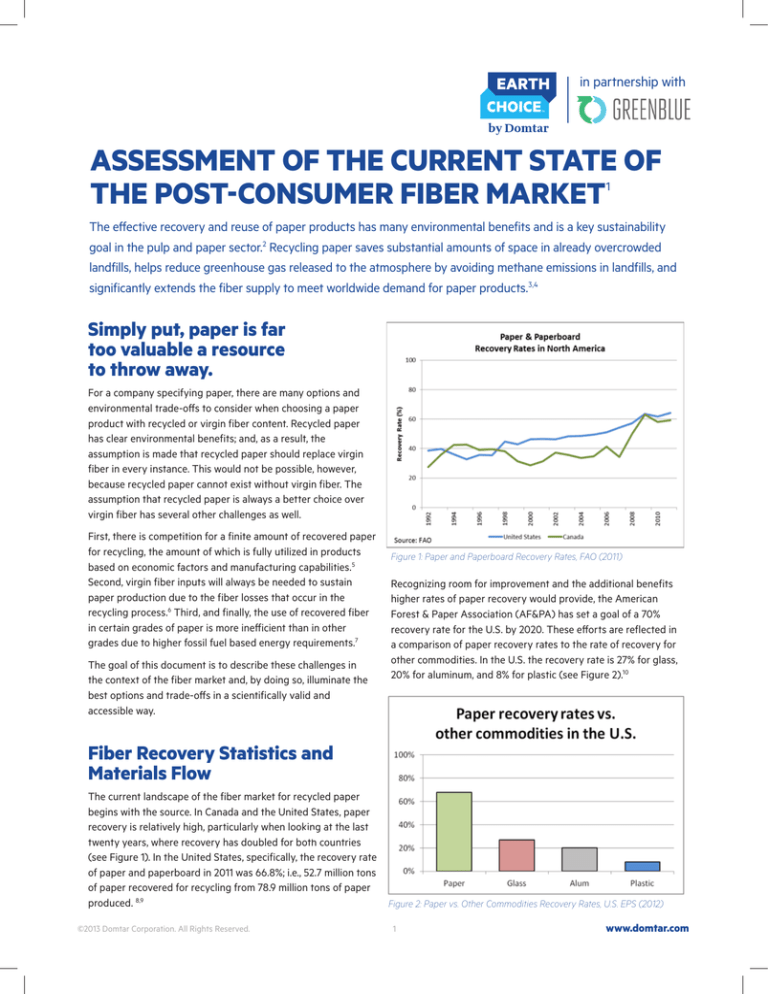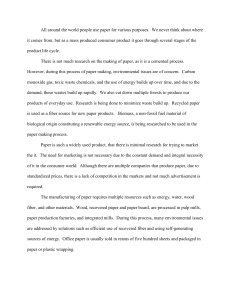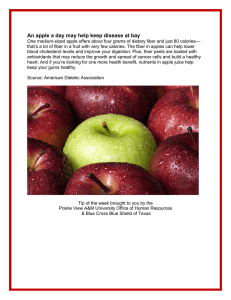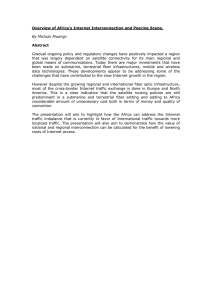
in partnership with
ASSESSMENT OF THE CURRENT STATE OF
THE POST-CONSUMER FIBER MARKET
1
The effective recovery and reuse of paper products has many environmental benefits and is a key sustainability
goal in the pulp and paper sector.2 Recycling paper saves substantial amounts of space in already overcrowded
landfills, helps reduce greenhouse gas released to the atmosphere by avoiding methane emissions in landfills, and
significantly extends the fiber supply to meet worldwide demand for paper products.3,4
“
Simply put, paper is far
too valuable a resource
to throw away.
For a company specifying paper, there are many options and
environmental trade-offs to consider when choosing a paper
product with recycled or virgin fiber content. Recycled paper
has clear environmental benefits; and, as a result, the
assumption is made that recycled paper should replace virgin
fiber in every instance. This would not be possible, however,
because recycled paper cannot exist without virgin fiber. The
assumption that recycled paper is always a better choice over
virgin fiber has several other challenges as well.
First, there is competition for a finite amount of recovered paper
for recycling, the amount of which is fully utilized in products
based on economic factors and manufacturing capabilities. 5
Second, virgin fiber inputs will always be needed to sustain
paper production due to the fiber losses that occur in the
recycling process.6 Third, and finally, the use of recovered fiber
in certain grades of paper is more inefficient than in other
grades due to higher fossil fuel based energy requirements.7
The goal of this document is to describe these challenges in
the context of the fiber market and, by doing so, illuminate the
best options and trade-offs in a scientifically valid and
accessible way.
Figure 1: Paper and Paperboard Recovery Rates, FAO (2011)
Recognizing room for improvement and the additional benefits
higher rates of paper recovery would provide, the American
Forest & Paper Association (AF&PA) has set a goal of a 70%
recovery rate for the U.S. by 2020. These efforts are reflected in
a comparison of paper recovery rates to the rate of recovery for
other commodities. In the U.S. the recovery rate is 27% for glass,
20% for aluminum, and 8% for plastic (see Figure 2).10
Fiber Recovery Statistics and
Materials Flow
The current landscape of the fiber market for recycled paper
begins with the source. In Canada and the United States, paper
recovery is relatively high, particularly when looking at the last
twenty years, where recovery has doubled for both countries
(see Figure 1). In the United States, specifically, the recovery rate
of paper and paperboard in 2011 was 66.8%; i.e., 52.7 million tons
of paper recovered for recycling from 78.9 million tons of paper
produced. 8,9
Figure 2: Paper vs. Other Commodities Recovery Rates, U.S. EPS (2012)
“
©2013 Domtar Corporation. All Rights Reserved.
1
www.domtar.com
The input of virgin fiber into the
overall paper production system
will always be required to meet
demand and achieve certain quality
and performance attributes.
”
”
Whether paper originates from recovered paper or virgin fiber
sources, both fiber sources must be transported and processed
either in North America or overseas.11 The destination for
recovered fiber is driven in large part by technical and economic
factors such as the current price for recovered fiber, quality of the
recovered paper, distance from the origin of recovery to the
converting facility, and the technical capabilities of available mills.
Fiber markets do a very good job of getting recovered fiber to the
most eco-efficient opportunity for reuse.
Growth in worldwide demand for recovered paper has had
considerable impact on the destination as well. In 2011, U.S. net
exports of all recovered paper (i.e., exports minus imports) were
42% while Canada’s net exports were 38%.12,13 In fact, in the last ten
years, worldwide demand for recovered paper has grown by 45%,
with China being one of the largest importers.14 This competition
for recovered fiber reduces the volume available and increases the
cost for North American manufacturers. Moreover, pulp and paper
companies in Asia often benefit from government subsidies which
make it difficult, and sometimes financially prohibitive, for North
American companies to compete.
Benefits of Exporting Recovered
Paper
As challenging as it is for paper manufacturers in North America,
there are some positive environmental aspects to the flow of
recovered fiber overseas.16 A recent analysis examined the carbon
emissions resulting from the transport of recovered materials from
the UK to China. The study suggests that even with the increased
emissions associated with transportation, the CO2 savings from
recycling are not lost when compared to other alternatives such
as landfilling.17
Another benefit that can be attributed to the export of fiber
overseas is that China’s import of recovered paper relieves
pressure on forests in that region by providing an alternative to
virgin fiber.18 This includes forests in Russia and Southeast Asia
where a lack of sustainable forest management and illegal logging
is a great concern.19
Virgin Fiber Inputs Will Always Be
Required
The inputs of virgin fiber into the overall paper production system
will always be required to meet demand and achieve certain
quality and performance attributes. In Canada and the U.S., about
66% of wood fiber used for paper and paperboard products comes
from virgin fiber sources.20 The remaining 33% comes from
recovered paper fiber21 (see Figure 4). The relationship between
the amount and types of fiber required—recovered or virgin—is
important to understand because the goal is to make the best use
of fiber resources. This is mainly related to the fiber yield.
The recovery of printing and writing papers in the U.S. illustrates
how exports affect availability for recycling in the U.S. The recovery
rate of printing and writing papers in 2011 was 57%; i.e., 12.6 million
tons.15 There is particularly high demand and competition for
recovered printing and writing papers because it is a high quality
fiber sought after as an input that can be used in most grades
of recycled paper. As a result, the majority of recovered paper
ends up overseas as exports, as price and demand dictate (see
Figure 3).
Figure 4: Papermaking Materials by Source, U.S. EPA (2012)
Figure 3: “Where Recovered Paper Goes”, AF&PA (2011)
Fiber yield is the volume of usable fiber derived from either virgin
forest fiber or recovered paper. In the case of virgin fiber, it is the
proportion of fiber from trees that is converted into pulp for
papermaking. In the case of recycled paper, it is the proportion of
fiber from recovered paper that is converted into new pulp for
papermaking. Fiber yield is an important factor to consider in
determining which paper products utilize recycled fiber most
efficiently based on the environmental and technical factors
described in this document.
©2013 Domtar Corporation. All Rights Reserved.
2
www.domtar.com
Processing
The process of preparing recovered fiber for reuse breaks and
stiffens fibers, in some cases resulting in poor product
performance. To adjust for better performance, more fiber per
sheet may be needed for recycled paper. Using recovered fiber in
some grades, like magazine papers for example, may result in
lower yields (i.e., a lower efficiency rate) because of the higher
chemical applications and processing efforts. In some
circumstances, it may not make sense to use higher levels of
recovered fiber in those grades that would suffer significant yield
losses as a result. In general, fiber can be recycled approximately
five to seven times before fibers become “too short”
for recycling.22
Unrecoverable Paper
A portion of recovered fiber is removed from the system when it is
used in certain applications such as hygienic tissue, books, and
archival documents, or when it is attached to nonpaper materials
from which it cannot be separated. This fiber is permanently lost
and unavailable for recycling.
Paper Exports
In terms of specifying for recycled in North America, anytime
paper is exported it becomes, at least temporarily, unavailable to
the North American system. In other words, it may be input to
products that are sold in Asia or other regions and subsequently
recycled or disposed of within those regions.
Fiber Longevity
Another way to illustrate the need for virgin fiber inputs is to
consider how long various grades of paper could be produced with
only recovered fiber. Figure 5 illustrates findings from a study that
examined the longevity of fiber with current and maximum
recycling rates. Depending on the grade, the market would run out
of paper in just weeks to months due to the aggregated fiber
losses from 1) processing, 2) unrecoverable paper, and
3) exports.23 Newer studies are not available, and though the data
cited requires an update to account for increased mill efficiencies
and fiber yields since 2006, the simple fact remains true: even with
maximum recycling rates, production of paper products could not
be sustained without virgin fiber inputs.
For grades such as printing and writing papers, fiber for
production is even less sustainable than in other grades, such as
tissue and containerboard, because of the specific converting and
processing that is required. Considering the variable longevity, or
fiber yield, in certain grades, it is important to consider how
recovered and virgin fiber resources can be optimized to exploit
the greatest environmental benefits.
Energy Use and Recycling
Minimizing the carbon footprint is a sustainability goal for many
paper purchasers, and when this is the case, the greatest benefits
are gained by reducing fossil fuel use in the manufacturing stage.
A recent AF&PA Life Cycle Assessment that looked specifically at
printing and writing papers found that the use of fossil fuels in the
pulp and paper manufacturing process drives the majority of
environmental impacts.24 This is true for both recovered and virgin
fiber material sources because both need to go through a
conversion process.25
Because of the inherent complexity of the paper manufacturing
supply chain, several factors have a significant bearing on the
decision to choose recycled or virgin content. These include the
technical requirements of the paper grade being manufactured,
mill configurations, location to fiber supply, and the cleanliness of
electrical energy that is locally available.
Directing Recovered Fiber to
Lower Grades
The fossil fuel based energy use (and related greenhouse gas
emissions) for the production of printing and writing papers that
use recovered fiber has been shown to be greater than the fossil
fuel based energy use required for the production of other paper
grades that use recycled content, such as corrugated cardboard.26
When this is the case, and as long as there is capacity for
incorporation of recovered fiber into lower grade papers, directing
recovered fiber into lower grades is almost always preferable.
Energy Profile at the Mill
Figure 5: Fiber Efficiency by Paper Grade Metafore (2006)
©2013 Domtar Corporation. All Rights Reserved.
The reason that recycled paper tends to require more fossil fuels
during the manufacturing stage is due primarily to the fact that
virgin mills convert wood waste generated during paper
manufacture into energy. This energy is subsequently used in the
manufacture of paper products.27,28 Greenhouse gas emissions
from energy derived from biomass such as this are generally
reported as zero, an approach recommended by greenhouse gas
accounting authorities such as the Intergovernmental Panel on
Climate Change (IPCC).29
3
www.domtar.com
Domtar is very active in working to
certify to the FSC® standard. In 2000,
Domtar became the first forest
products company in North America to
achieve FSC certification from the
forest to the marketplace; and, today,
nearly 20% of Domtar’s paper products
are FSC certified.
”
”
Quality of the Recovered
Paper Supply
The increase in waste paper recovery rates has been driven in part
by an increase in the recovery of mixed, and thus more highly
contaminated, paper. Recent studies have demonstrated increased
energy use requirements during the decontamination and
recovery of fiber from mixed sources. 30
Location to the Mill and Mill Type
Recovery of high quality white paper primarily occurs in highly
populated urban areas, which is why recycling mills are also
located in urban areas in order to be near the source. Manufacture
of recycled paper at rural mills requires additional transport of
recovered paper or pulp that can be used for recycling. In the case
that pulp is purchased and transported to a rural mill, the pulp also
needs to be dried prior to transport, an energy requirement and
expense that may not be a viable financial or environmental
decision. Moreover, pulp and paper mills are complex industrial
systems that cannot be rapidly or inexpensively altered in order to
process varying percentages of recovered fibers.
When Selecting Virgin Fiber Is the
Best Option
If choosing recycled is not the best option, choosing virgin fiber
certified by organizations such as the Forest Stewardship
CouncilTM (FSC) is preferred. FSC certification provides assurance
that forests are being managed to the highest environmental and
social standards, while FSC chain-of-custody certification provides
assurance that products bearing the FSC label directly support
responsible forest management. 31 Because all recovered fibers
originated from virgin sources, this choice will continue to have
positive implications each time the fiber is reused.
Domtar is very active in working to certify to the FSC standard. In
2000, Domtar became the first forest products company in North
America to achieve FSC certification from the forest to the
marketplace; and, today, nearly 20% of Domtar’s paper products
are FSC certified. Across the American paper products industry,
however, the FSC estimates that only 4% to 6% of paper products
earn certification. This is only equivalent to the amount of space
organic food takes up on grocery store shelves. Even more
alarming: the FSC estimates about twice as many paper products
—if not more—come from illegally harvested wood. 32
Summary
Responsible paper choices are not as simple as choosing recycled over virgin fiber paper products. Choosing the right fiber type for the
production of various paper products is dependent upon a number of factors, and requires thoughtful consideration of environmental
trade-offs. When selecting the most appropriate fiber for their products, responsible paper manufacturers operating within market and mill
constraints will take all these factors into consideration. Variables to consider when determining if recycled or virgin content is the best option
include:
• Availability of quality fiber,
• Proximity to fiber supplies,
• Amount and source of energy required to process raw materials,
• Percentage of recycled fiber inputs compatible with mill capabilities, and
• Whether or not fibers are from certified sources.
Increasing recovery rates is crucial in order to keep paper out of landfills and make optimal use of fiber resources. However, paper that is
recovered should also go to its most efficient and logical end use. When purchasing fine printing and writing papers, selection of papers
manufactured by companies working to improve both efficiency and sustainability throughout the paper life cycle is the best approach.
This will include selection of papers manufactured from certified fiber sources and containing recycled content when it makes the most
sense based on the factors highlighted in this document.
©2013 Domtar Corporation. All Rights Reserved.
4
www.domtar.com
Sources
1 Working title as designated by Domtar, Inc. Alternative titles have been suggested.
2 Paper is defined as material made from cellulose pulp including newspapers, books, magazines, office paper, writing paper, tissue paper, and packaging including corrugated
boxes and paperboard containers, among others.
3 Intergovernmental Panel on Climate Change (IPCC), “Climate Change 2007: Working Group I: The Physical Science Basis, 2.10.2 Direct Global Warming Potentials,” 2007,
accessed November 19, 2012, <http://www.ipcc.ch/publications_and_data/ar4/wg1/en/ch2s2-10-2.html>
4http://www.epa.gov/osw/conserve/materials/paper/basics/
5 Forest and Agriculture Organization of the United Nations (FAO) “Recovered Paper Data 2009,” http://www.fao.org/docrep/013/k9444e/k9444e00.pdf
6 Recycled content is defined as the proportion, by mass, of recycled material in a product or packaging. Both pre-consumer and post-consumer materials are considered
as recycled content. See reference #5 for further information.
7http://www.tappi.org/paperu/all_about_paper/faq.htm
8http://www.paperrecycles.org/
9 Paper recovery rate equals the weight of paper recovered as a percentage of total supply. Supply is calculated as consumption plus imports minus exports. Data are not
available parsed according to post- and pre-consumer; the recovery rate includes both types of paper with post-consumer paper making up the majority of total supply.
10Recycling and EPR White Paper, AF&PA 2012
11 FAO, “Recovered Paper Data,” 2009
12 Paperrecycles.org, “Where Recovered Paper Goes,” 2011, accessed November 19, 2012, < http://paperrecycles.org/stat_pages/recovered_goes.html>
13 FAOSTAT, “Forestry Production and Trade,” 1992-2011
14 Resource Information Systems Inc. (RISI), Press release, “Recovered paper prices expected to remain high through 2016,” June 5, 2012, accessed November 19, 2012,
<http://www.prnewswire.com/news-releases/recovered-paper-prices-expected-to-remain-high-through-2016-157173585.html>
15 Paperrecycles.org referencing U.S. Bureau of Census, “Recovery of Printing-Writing Papers,” 2011, accessed November 19, 2012,
<http://paperrecycles.org/stat_pages/recovery_printing.html>
16 November 2012 prices for recovered sorted office paper as reported by RISI are as follows: Domestic: 166.72 USD/metric ton; Export from US to China: 235-240 USD/metric ton.
17 Waste & Resources Action Programme (WRAP), “CO2 Impacts of Transporting the UK’s Recovered Paper and Plastic Bottles to China,” August 2008, accessed November 19, 2012, <http://www.realrecycling.org.uk/resources/files/env_and_carbon_benefits/CO2%20impacts%20of%20exporting%20paper%20and%20plastic%20-%20WRAP.pdf>
18 Brian Stafford, Forest Trends, “Environmental Aspects of China’s Papermaking Fiber Supply,” July 2007, accessed November 19, 2012,
<http://www.forest-trends.org/documents/files/doc_521.pdf>
19 Forest and Agriculture Organization of the United Nations (FAO), “Southeast Asian forests and forestry to 2020,” 2011, accessed February 2013,
<http://www.fao.org/docrep/013/i1964e/i1964e00.pdf>
20Virgin fiber is derived directly from trees and other plants that are newly pulped and previously unused, while recovered fiber includes cellulose based fibers from
post-consumer and pre-consumer sources such as mill scraps and obsolete inventory. Post-consumer paper makes up the vast majority of all recovered paper and is defined as paper that has reached the end of its use as a consumer item. References: United States Environmental Protection Agency (EPA), “Municipal Solid Waste Generation, Recycling,
and Disposal in the United States Tables and Figures for 2010,” December 2011, accessed November 19, 2012, <http://www.epa.gov/osw/nonhaz/municipal/pubs/2010_MSW_Tables_
and_Figures_508.pdf> AND GreenBlue and references therein, “Recovered and Recycled: Paper Fiber Types Defined,” accessed November 19, 2012,
<http://thepaperlifecycle.org/recovery/in-depth/recovered-and-recycled-paper-fiber-types-defined>
21 Recovered fiber refers to the U.S. EPA definition including post-consumer paper that has passed through its end usage as consumer items, including: used corrugated boxes;
old newspapers; old magazines; mixed waste paper; tabulating cards; and used cordage; and all paper, paperboard, and fibrous materials that enter and are collected from
municipal solid waste. http://www.epa.gov/osw/conserve/materials/paper/resources/glossary.htm
22http://www.tappi.org/paperu/all_about_paper/faq.htm
23Metafore, “The Fiber Cycle Technical Document,” March 2006
24American Forest & Paper Association (AF&PA), “Printing & Writing Papers: Life-Cycle Assessment Summary Report,” 2010
25http://www.afandpa.org/docs/default-source/default-document-library/final-faq-document-12-3-10.pdf
26Paper Task Force, “White Paper No. 3 Lifecycle Environmental Comparison: Virgin Paper and Recycled Paper-Based Systems,” Originally Published December 19, 1995,
Updated February 2002, pg. 145, accessed November 19, 2012, <http://c.environmentalpaper.org/documents/1618_WP3.pdf>
27Ibid.
28Wells et al., 212-222.
29Intergovernmental Panel on Climate Change (IPCC), accessed November 19, 2012, <http://www.ipcc-nggip.iges.or.jp/faq/faq.html>
30Iosip, Alina et al. “The influence of contaminants in the environmental impact of recovered paper: a life cycle assessment perspective,” International Journal of Life Cycle Assessment (2010) 17: 1050-1058.
31 Forest Stewardship Council, “About Certification,” accessed November 19, 2012, <http://us.fsc.org/about-certification.198.htm>
32 Domtar, “One of the Big Questions You Should Ask When Choosing Paper,” 2011, accessed November 19, 2012,
<http://www.domtarpapertrail.com/rsrc/en/docs/Domtar%20FSC%20White%20Paper%202011.pdf>
©2013 Domtar Corporation. All Rights Reserved.
5
www.domtar.com






